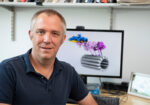

The dynein/dynactin complex is a key microtubule motor that is hijacked by all major classes of viruses. There are also increasing examples of it being co-opted by intracellular bacterial pathogens. The different hijacking strategies give unique insights into the pathogen life cycle and can help uncover novel insights into dynein’s cellular roles.
Although several examples of pathogen–motor interactions have been identified, the structural basis of these processes remains poorly understood. Current AlphaFold predictions are typically of low confidence and therefore the goal of this project is to use cryo-electron microscopy (cryoEM) to determine the structural principles underlying motor hijacking. The aim will be to use this information, together with biochemical and cellular assays, to search for novel pathogen effectors which target the dynein transport machinery.